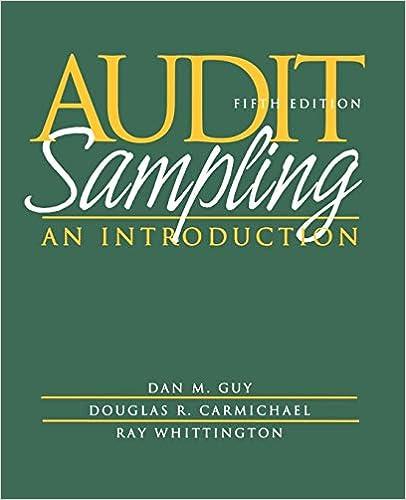Question
Question 1: Cost allocation Product A Product B Total sales volume (units) 180 100 280 Revenue $2,000 $12,000 $14,000 Variable costs: direct materials $400 $800
Question 1: Cost allocation
| Product A | Product B | Total | |
| sales volume (units) | 180 | 100 | 280 |
| Revenue | $2,000 | $12,000 | $14,000 |
| Variable costs: | |||
| direct materials | $400 | $800 | $1,200 |
| direct labor | $800 | $2,000 | $2,800 |
| Contribution margin | $800 | $9,200 | $10,000 |
| Fixed costs | $8,400 | ||
| Profit | $1,600 |
a) Allocate the fixed costs between products A and B. Use direct labor dollars as the cost driver. allocation rate=$ per DL$ allocated costs for A=$ allocated costs for B=$ b) Compute the profit margins for products A and B: profit margin for A=$ profit margin for B=$ Enter negative numbers with a minus sign, i.e., a loss of $1,000 should be entered as -1000, not as (1000) or ($1000). c) Should you drop product A or product B in the short term? Why?
Keep both products -- both have positive contribution marginDrop product A -- it has negative profit margin Drop product A -- it has negative contribution marginDrop product A -- it has smaller contribution margin than product B
Should you drop product A or product B in the long term? Why?
Keep both products -- both have positive contribution margin Drop product A -- it has negative profit margin Drop product A -- it has negative contribution margin Drop product A -- it has smaller contribution margin than product B
d) If you drop product A in the short term, fixed costs will: remain the same decrease by $2,400 profit will: decrease by $800 increase by $1,600 If you drop product A in the long term, fixed costs will: remain the same decrease by $2,400 profit will: decrease by $800 increase by $1,600 e) Allocate the fixed costs between products A and B, using the number of units as the cost driver. allocation rate=$ per unit allocated costs for A=$ allocated costs for B=$ These allocated amounts are very different from what you got in part (a). In general, should we use the allocated costs from part (a) or from part (e)? Why?
use the allocated costs from (a) -- direct labor is always a better cost driver than the number of units use the allocated costs from (e) -- the number of units is always a better cost driver than direct labor it depends -- direct labor can be a better cost driver in some situations, and the number of units (or some other activity measure) can be a better cost driver in other situations
f) Suppose that a firm uses a labor-intensive production process. The most reasonable cost driver for manufacturing overhead costs is:
number of units machine hours direct labor (measured in hours or dollars)
Suppose that a firm uses a machine-intensive production process. The most reasonable cost driver for manufacturing overhead costs is:
number of units machine hours direct labor (measured in hours or dollars)
g) Suppose that a firm uses a machine-intensive process to make the components for the finished product and then uses a labor-intensive process to assemble the finished product. The firm wants to implement a refined cost allocation with two cost pools: Pool 1: overhead costs related to the production of components (e.g., machine depreciation, rent for the factory building used to make the components, salaries of machine maintenance staff) Pool 2: overhead costs related to the assembly of the finished product (e.g., depreciation on tools used by assembly workers, rent for the factory building used for assembly, salaries of labor supervisors) The most reasonable cost drivers for the two pools are:
direct labor hours or dollars for both pools number of units for pool 1 and number of workers for pool 2 machine-hours for pool 1 and direct labor hours or dollars for pool 2machine hours for both pools
Step by Step Solution
There are 3 Steps involved in it
Step: 1

Get Instant Access to Expert-Tailored Solutions
See step-by-step solutions with expert insights and AI powered tools for academic success
Step: 2

Step: 3

Ace Your Homework with AI
Get the answers you need in no time with our AI-driven, step-by-step assistance
Get Started


